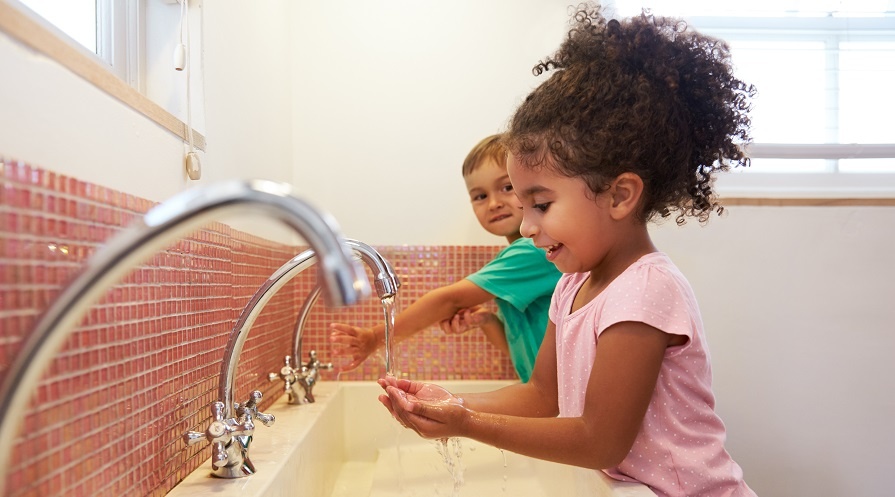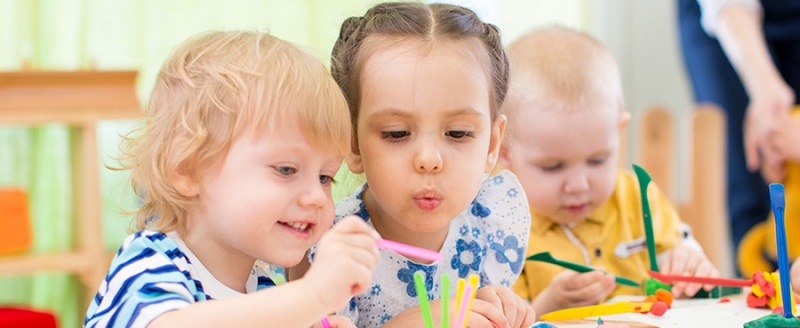
Five steps for preventing the spread of infections in an Early Years setting
Clean and healthy
Melanie Pilcher, quality and standards manager at the Alliance, shares five steps for preventing the spread of infections in an Early Years setting.
Babies and young children have a relatively low state of immunity, as they have not previously been exposed to many specific germs. When they start attending an early years setting, they are exposed to an increased number of childhood infections and illnesses.
It is not unusual for children to attend more than one setting, or to have older siblings who attend school. Therefore, the number of germs they come into contact with increases and infections are more easily spread.
Any shared environment increases the risk, however, in an early years setting, children are in close proximity to each other for much of the time. They share toys and resources that can easily be contaminated with saliva, urine or faeces and are, of course, less likely to understand the importance of good hygiene practices such as washing hands.
All early years practitioners have an important role to play in preventing the spread of infection. The Early Years Foundation Stage says that providers must have a procedure for “responding to children who are ill or infectious, take necessary steps to prevent the spread of infection and take appropriate action if children are ill”.
What is infection control?
Infection control is concerned with the hygiene practices and the precautions that all practitioners take to prevent the spread of germs and the actions taken to control the spread of infection.
Here are five steps you can take to help prevent the spread of infection in your setting:
1. Good basic personal hygiene – in particular, make sure that staff and children wash their hands whenever they are obviously dirty and in the following circumstances:
Before:
• starting/finishing work
• handling, preparing, serving or eating food, including preparing babies bottles
• giving medication to a child or taking it yourself
• using a computer keyboard
• messy play activities such as dough, sand or water
After:
• touching anything that may be contaminated – including soiled clothing
• contact with blood or bodily fluids
• using the toilet or helping a child use the toilet or potty
• changing nappies – even if gloves are worn
• during an outbreak of diarrhoea and/or vomiting in the setting
• blowing/wiping runny noses
• any cleaning procedure
• handling pets, pet cages or related items
• outdoor play activities
• after removing single-use or other protective gloves
2. Cover existing wounds or skin lesions - activities such as preparing and serving food, play dough, clay, gloop, sand or water play should be avoided by staff and children if they have open wounds on their hands. Lesions caused by skin conditions such as eczema may be particularly aggravated by such activities.
3. Use appropriate single-use Personal Protective Equipment (PPE) – this includes aprons and gloves for nappy changing, cleaning up vomit or blood or any activity that involves the risk of contamination. PPE, when used appropriately, protects staff from germs and splashing, but also protects children from contamination from staff clothing. PPE is often single-use and boxes of single-use gloves or aprons are usually marked.
4. Have a clear procedure for cleaning toys, equipment and the environment - A regular cleaning schedule is essential in any early years environment to prevent the spread of infection. Germs cannot thrive on clean, dry surfaces. The cleaning schedule should cover the equipment and resources in each area, how often it is cleaned and by which method. Staff must always be prepared to clean up as they go along, using disposable paper towels for spillages of blood and/or bodily fluids, wearing gloves and plastic aprons.
The frequency of these cleans should be increased during infection outbreaks. In some cases it may be necessary to close a setting while a deep clean takes place which involves cleaning carpets, curtains and all surfaces including walls.
5. Understand and follow guidance for managing illness and infections – despite the best efforts of staff to prevent the spread of infection, it is inevitable that some children and staff will become poorly because many infections are contagious before any obvious symptoms appear. Early years settings are not equipped to manage ‘sick’ children. As a general principle, children with an infection should be kept at home while they have symptoms or are feeling unwell. The same rules apply to staff too.
Find out more
This information is taken from Infection Prevention and Control in an Early Years Setting, an online training course developed in partnership between the Early Years Alliance and EduCare, the Alliance’s special training partner. The course is included in the suite of safeguarding and duty of care courses that all Alliance members can access free-of-charge as part of their membership. To find out more, visit https://www.eyalliance.org.uk/educare or contact alliance@educare.co.uk
This article originally appeared in Under 5 magazine
New online training course to help Early Years practitioners get to grips with EYFS
The Pre-school Learning Alliance and EduCare have launched a new online training course designed to support both new and experienced practitioners in their understanding and implementation of the Early Years Foundation Stage (EYFS) Framework in their provision.
Read more
